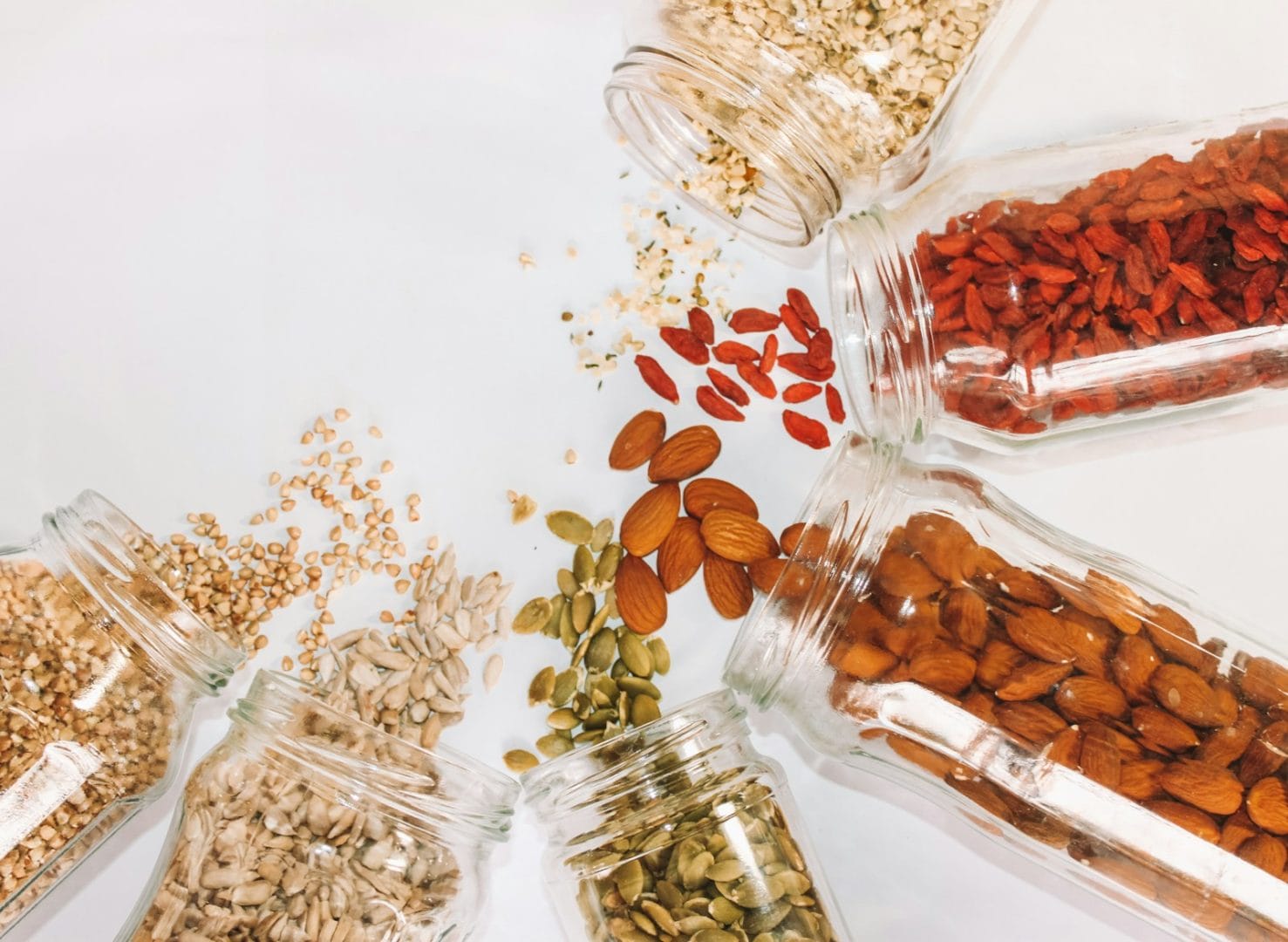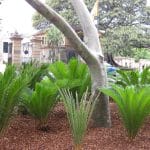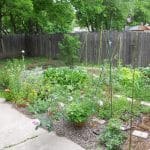What to Plant This Year: Seed Guide for Gardeners
Guides How To's Planting Seeds

I’ve got a confession: I’ve bought more seeds than I’ll ever plant. Some I’ve tucked away in neat little envelopes. Others… well, they’re floating somewhere at the bottom of a garden tote, probably dating back to a year when I thought growing celery from seed was a good idea. (Spoiler: it wasn’t, at least not that year.)
That’s the thing about seeds — they’re tiny promises. Some years they give you more than you could possibly eat. Other years, you wonder if they even bothered to sprout. But even after decades in the dirt, I still get that spark when I open a fresh packet.
This guide? It’s my all-in-one seed list — the vegetables, herbs, fruits, and edible flowers I think every gardener should at least know about, even if you don’t grow them all. Whether you’re in the chill of Zone 3 or the warmth of Zone 10, you’ll find something here worth planting.
Master Seed Planting List
| Category | Crop | When to Sow | Spacing | Sunlight | Water Needs | Zones |
|---|---|---|---|---|---|---|
| Leafy Greens | Lettuce (Head) | Refer to crop-specific timing based on last frost date | Varies by crop (typically 6–24 inches) | Full sun to partial shade | 1 inch/week average | Zones 3–10 (check crop-specific tolerance) |
| Leafy Greens | Lettuce (Leaf) | Refer to crop-specific timing based on last frost date | Varies by crop (typically 6–24 inches) | Full sun to partial shade | 1 inch/week average | Zones 3–10 (check crop-specific tolerance) |
| Leafy Greens | Spinach | Refer to crop-specific timing based on last frost date | Varies by crop (typically 6–24 inches) | Full sun to partial shade | 1 inch/week average | Zones 3–10 (check crop-specific tolerance) |
| Leafy Greens | Kale | Refer to crop-specific timing based on last frost date | Varies by crop (typically 6–24 inches) | Full sun to partial shade | 1 inch/week average | Zones 3–10 (check crop-specific tolerance) |
| Leafy Greens | Swiss Chard | Refer to crop-specific timing based on last frost date | Varies by crop (typically 6–24 inches) | Full sun to partial shade | 1 inch/week average | Zones 3–10 (check crop-specific tolerance) |
| Leafy Greens | Collard Greens | Refer to crop-specific timing based on last frost date | Varies by crop (typically 6–24 inches) | Full sun to partial shade | 1 inch/week average | Zones 3–10 (check crop-specific tolerance) |
| Leafy Greens | Mustard Greens | Refer to crop-specific timing based on last frost date | Varies by crop (typically 6–24 inches) | Full sun to partial shade | 1 inch/week average | Zones 3–10 (check crop-specific tolerance) |
| Leafy Greens | Arugula | Refer to crop-specific timing based on last frost date | Varies by crop (typically 6–24 inches) | Full sun to partial shade | 1 inch/week average | Zones 3–10 (check crop-specific tolerance) |
| Leafy Greens | Endive | Refer to crop-specific timing based on last frost date | Varies by crop (typically 6–24 inches) | Full sun to partial shade | 1 inch/week average | Zones 3–10 (check crop-specific tolerance) |
| Leafy Greens | Escarole | Refer to crop-specific timing based on last frost date | Varies by crop (typically 6–24 inches) | Full sun to partial shade | 1 inch/week average | Zones 3–10 (check crop-specific tolerance) |
| Leafy Greens | Watercress | Refer to crop-specific timing based on last frost date | Varies by crop (typically 6–24 inches) | Full sun to partial shade | 1 inch/week average | Zones 3–10 (check crop-specific tolerance) |
| Leafy Greens | Mizuna | Refer to crop-specific timing based on last frost date | Varies by crop (typically 6–24 inches) | Full sun to partial shade | 1 inch/week average | Zones 3–10 (check crop-specific tolerance) |
| Leafy Greens | Pak Choi | Refer to crop-specific timing based on last frost date | Varies by crop (typically 6–24 inches) | Full sun to partial shade | 1 inch/week average | Zones 3–10 (check crop-specific tolerance) |
| Leafy Greens | Tatsoi | Refer to crop-specific timing based on last frost date | Varies by crop (typically 6–24 inches) | Full sun to partial shade | 1 inch/week average | Zones 3–10 (check crop-specific tolerance) |
| Root Vegetables | Carrot | Refer to crop-specific timing based on last frost date | Varies by crop (typically 6–24 inches) | Full sun to partial shade | 1 inch/week average | Zones 3–10 (check crop-specific tolerance) |
| Root Vegetables | Beet | Refer to crop-specific timing based on last frost date | Varies by crop (typically 6–24 inches) | Full sun to partial shade | 1 inch/week average | Zones 3–10 (check crop-specific tolerance) |
| Root Vegetables | Radish | Refer to crop-specific timing based on last frost date | Varies by crop (typically 6–24 inches) | Full sun to partial shade | 1 inch/week average | Zones 3–10 (check crop-specific tolerance) |
| Root Vegetables | Turnip | Refer to crop-specific timing based on last frost date | Varies by crop (typically 6–24 inches) | Full sun to partial shade | 1 inch/week average | Zones 3–10 (check crop-specific tolerance) |
| Root Vegetables | Rutabaga | Refer to crop-specific timing based on last frost date | Varies by crop (typically 6–24 inches) | Full sun to partial shade | 1 inch/week average | Zones 3–10 (check crop-specific tolerance) |
| Root Vegetables | Parsnip | Refer to crop-specific timing based on last frost date | Varies by crop (typically 6–24 inches) | Full sun to partial shade | 1 inch/week average | Zones 3–10 (check crop-specific tolerance) |
| Root Vegetables | Onion (Bulb) | Refer to crop-specific timing based on last frost date | Varies by crop (typically 6–24 inches) | Full sun to partial shade | 1 inch/week average | Zones 3–10 (check crop-specific tolerance) |
| Root Vegetables | Shallot | Refer to crop-specific timing based on last frost date | Varies by crop (typically 6–24 inches) | Full sun to partial shade | 1 inch/week average | Zones 3–10 (check crop-specific tolerance) |
| Root Vegetables | Garlic | Refer to crop-specific timing based on last frost date | Varies by crop (typically 6–24 inches) | Full sun to partial shade | 1 inch/week average | Zones 3–10 (check crop-specific tolerance) |
| Root Vegetables | Leek | Refer to crop-specific timing based on last frost date | Varies by crop (typically 6–24 inches) | Full sun to partial shade | 1 inch/week average | Zones 3–10 (check crop-specific tolerance) |
| Root Vegetables | Celery Root (Celeriac) | Refer to crop-specific timing based on last frost date | Varies by crop (typically 6–24 inches) | Full sun to partial shade | 1 inch/week average | Zones 3–10 (check crop-specific tolerance) |
| Root Vegetables | Daikon Radish | Refer to crop-specific timing based on last frost date | Varies by crop (typically 6–24 inches) | Full sun to partial shade | 1 inch/week average | Zones 3–10 (check crop-specific tolerance) |
| Root Vegetables | Kohlrabi | Refer to crop-specific timing based on last frost date | Varies by crop (typically 6–24 inches) | Full sun to partial shade | 1 inch/week average | Zones 3–10 (check crop-specific tolerance) |
| Root Vegetables | Jerusalem Artichoke | Refer to crop-specific timing based on last frost date | Varies by crop (typically 6–24 inches) | Full sun to partial shade | 1 inch/week average | Zones 3–10 (check crop-specific tolerance) |
| Root Vegetables | Horseradish | Refer to crop-specific timing based on last frost date | Varies by crop (typically 6–24 inches) | Full sun to partial shade | 1 inch/week average | Zones 3–10 (check crop-specific tolerance) |
| Brassicas | Broccoli | Refer to crop-specific timing based on last frost date | Varies by crop (typically 6–24 inches) | Full sun to partial shade | 1 inch/week average | Zones 3–10 (check crop-specific tolerance) |
| Brassicas | Broccolini | Refer to crop-specific timing based on last frost date | Varies by crop (typically 6–24 inches) | Full sun to partial shade | 1 inch/week average | Zones 3–10 (check crop-specific tolerance) |
| Brassicas | Cauliflower | Refer to crop-specific timing based on last frost date | Varies by crop (typically 6–24 inches) | Full sun to partial shade | 1 inch/week average | Zones 3–10 (check crop-specific tolerance) |
| Brassicas | Romanesco | Refer to crop-specific timing based on last frost date | Varies by crop (typically 6–24 inches) | Full sun to partial shade | 1 inch/week average | Zones 3–10 (check crop-specific tolerance) |
| Brassicas | Brussels Sprouts | Refer to crop-specific timing based on last frost date | Varies by crop (typically 6–24 inches) | Full sun to partial shade | 1 inch/week average | Zones 3–10 (check crop-specific tolerance) |
| Brassicas | Cabbage (Green) | Refer to crop-specific timing based on last frost date | Varies by crop (typically 6–24 inches) | Full sun to partial shade | 1 inch/week average | Zones 3–10 (check crop-specific tolerance) |
| Brassicas | Cabbage (Red) | Refer to crop-specific timing based on last frost date | Varies by crop (typically 6–24 inches) | Full sun to partial shade | 1 inch/week average | Zones 3–10 (check crop-specific tolerance) |
| Brassicas | Napa Cabbage | Refer to crop-specific timing based on last frost date | Varies by crop (typically 6–24 inches) | Full sun to partial shade | 1 inch/week average | Zones 3–10 (check crop-specific tolerance) |
| Fruiting Vegetables | Tomato (Slicing) | Refer to crop-specific timing based on last frost date | Varies by crop (typically 6–24 inches) | Full sun to partial shade | 1 inch/week average | Zones 3–10 (check crop-specific tolerance) |
| Fruiting Vegetables | Tomato (Cherry) | Refer to crop-specific timing based on last frost date | Varies by crop (typically 6–24 inches) | Full sun to partial shade | 1 inch/week average | Zones 3–10 (check crop-specific tolerance) |
| Fruiting Vegetables | Tomato (Paste) | Refer to crop-specific timing based on last frost date | Varies by crop (typically 6–24 inches) | Full sun to partial shade | 1 inch/week average | Zones 3–10 (check crop-specific tolerance) |
| Fruiting Vegetables | Pepper (Bell) | Refer to crop-specific timing based on last frost date | Varies by crop (typically 6–24 inches) | Full sun to partial shade | 1 inch/week average | Zones 3–10 (check crop-specific tolerance) |
| Fruiting Vegetables | Pepper (Hot) | Refer to crop-specific timing based on last frost date | Varies by crop (typically 6–24 inches) | Full sun to partial shade | 1 inch/week average | Zones 3–10 (check crop-specific tolerance) |
| Fruiting Vegetables | Eggplant | Refer to crop-specific timing based on last frost date | Varies by crop (typically 6–24 inches) | Full sun to partial shade | 1 inch/week average | Zones 3–10 (check crop-specific tolerance) |
| Fruiting Vegetables | Cucumber (Slicing) | Refer to crop-specific timing based on last frost date | Varies by crop (typically 6–24 inches) | Full sun to partial shade | 1 inch/week average | Zones 3–10 (check crop-specific tolerance) |
| Fruiting Vegetables | Cucumber (Pickling) | Refer to crop-specific timing based on last frost date | Varies by crop (typically 6–24 inches) | Full sun to partial shade | 1 inch/week average | Zones 3–10 (check crop-specific tolerance) |
| Fruiting Vegetables | Zucchini | Refer to crop-specific timing based on last frost date | Varies by crop (typically 6–24 inches) | Full sun to partial shade | 1 inch/week average | Zones 3–10 (check crop-specific tolerance) |
| Fruiting Vegetables | Summer Squash | Refer to crop-specific timing based on last frost date | Varies by crop (typically 6–24 inches) | Full sun to partial shade | 1 inch/week average | Zones 3–10 (check crop-specific tolerance) |
| Fruiting Vegetables | Winter Squash | Refer to crop-specific timing based on last frost date | Varies by crop (typically 6–24 inches) | Full sun to partial shade | 1 inch/week average | Zones 3–10 (check crop-specific tolerance) |
| Fruiting Vegetables | Pumpkin | Refer to crop-specific timing based on last frost date | Varies by crop (typically 6–24 inches) | Full sun to partial shade | 1 inch/week average | Zones 3–10 (check crop-specific tolerance) |
| Fruiting Vegetables | Okra | Refer to crop-specific timing based on last frost date | Varies by crop (typically 6–24 inches) | Full sun to partial shade | 1 inch/week average | Zones 3–10 (check crop-specific tolerance) |
| Fruiting Vegetables | Melon (Cantaloupe) | Refer to crop-specific timing based on last frost date | Varies by crop (typically 6–24 inches) | Full sun to partial shade | 1 inch/week average | Zones 3–10 (check crop-specific tolerance) |
| Fruiting Vegetables | Melon (Honeydew) | Refer to crop-specific timing based on last frost date | Varies by crop (typically 6–24 inches) | Full sun to partial shade | 1 inch/week average | Zones 3–10 (check crop-specific tolerance) |
| Fruiting Vegetables | Watermelon | Refer to crop-specific timing based on last frost date | Varies by crop (typically 6–24 inches) | Full sun to partial shade | 1 inch/week average | Zones 3–10 (check crop-specific tolerance) |
| Fruiting Vegetables | Tomatillo | Refer to crop-specific timing based on last frost date | Varies by crop (typically 6–24 inches) | Full sun to partial shade | 1 inch/week average | Zones 3–10 (check crop-specific tolerance) |
| Fruiting Vegetables | Ground Cherry | Refer to crop-specific timing based on last frost date | Varies by crop (typically 6–24 inches) | Full sun to partial shade | 1 inch/week average | Zones 3–10 (check crop-specific tolerance) |
| Legumes | Pea (Shelling) | Refer to crop-specific timing based on last frost date | Varies by crop (typically 6–24 inches) | Full sun to partial shade | 1 inch/week average | Zones 3–10 (check crop-specific tolerance) |
| Legumes | Pea (Snap) | Refer to crop-specific timing based on last frost date | Varies by crop (typically 6–24 inches) | Full sun to partial shade | 1 inch/week average | Zones 3–10 (check crop-specific tolerance) |
| Legumes | Bean (Bush) | Refer to crop-specific timing based on last frost date | Varies by crop (typically 6–24 inches) | Full sun to partial shade | 1 inch/week average | Zones 3–10 (check crop-specific tolerance) |
| Legumes | Bean (Pole) | Refer to crop-specific timing based on last frost date | Varies by crop (typically 6–24 inches) | Full sun to partial shade | 1 inch/week average | Zones 3–10 (check crop-specific tolerance) |
| Legumes | Soybean (Edamame) | Refer to crop-specific timing based on last frost date | Varies by crop (typically 6–24 inches) | Full sun to partial shade | 1 inch/week average | Zones 3–10 (check crop-specific tolerance) |
| Legumes | Lima Bean | Refer to crop-specific timing based on last frost date | Varies by crop (typically 6–24 inches) | Full sun to partial shade | 1 inch/week average | Zones 3–10 (check crop-specific tolerance) |
| Legumes | Fava Bean | Refer to crop-specific timing based on last frost date | Varies by crop (typically 6–24 inches) | Full sun to partial shade | 1 inch/week average | Zones 3–10 (check crop-specific tolerance) |
| Legumes | Black-eyed Pea | Refer to crop-specific timing based on last frost date | Varies by crop (typically 6–24 inches) | Full sun to partial shade | 1 inch/week average | Zones 3–10 (check crop-specific tolerance) |
| Legumes | Chickpea | Refer to crop-specific timing based on last frost date | Varies by crop (typically 6–24 inches) | Full sun to partial shade | 1 inch/week average | Zones 3–10 (check crop-specific tolerance) |
| Herbs | Basil | Refer to crop-specific timing based on last frost date | Varies by crop (typically 6–24 inches) | Full sun to partial shade | 1 inch/week average | Zones 3–10 (check crop-specific tolerance) |
| Herbs | Cilantro | Refer to crop-specific timing based on last frost date | Varies by crop (typically 6–24 inches) | Full sun to partial shade | 1 inch/week average | Zones 3–10 (check crop-specific tolerance) |
| Herbs | Parsley | Refer to crop-specific timing based on last frost date | Varies by crop (typically 6–24 inches) | Full sun to partial shade | 1 inch/week average | Zones 3–10 (check crop-specific tolerance) |
| Herbs | Rosemary | Refer to crop-specific timing based on last frost date | Varies by crop (typically 6–24 inches) | Full sun to partial shade | 1 inch/week average | Zones 3–10 (check crop-specific tolerance) |
| Herbs | Thyme | Refer to crop-specific timing based on last frost date | Varies by crop (typically 6–24 inches) | Full sun to partial shade | 1 inch/week average | Zones 3–10 (check crop-specific tolerance) |
| Herbs | Oregano | Refer to crop-specific timing based on last frost date | Varies by crop (typically 6–24 inches) | Full sun to partial shade | 1 inch/week average | Zones 3–10 (check crop-specific tolerance) |
| Herbs | Mint | Refer to crop-specific timing based on last frost date | Varies by crop (typically 6–24 inches) | Full sun to partial shade | 1 inch/week average | Zones 3–10 (check crop-specific tolerance) |
| Herbs | Sage | Refer to crop-specific timing based on last frost date | Varies by crop (typically 6–24 inches) | Full sun to partial shade | 1 inch/week average | Zones 3–10 (check crop-specific tolerance) |
| Herbs | Dill | Refer to crop-specific timing based on last frost date | Varies by crop (typically 6–24 inches) | Full sun to partial shade | 1 inch/week average | Zones 3–10 (check crop-specific tolerance) |
| Herbs | Tarragon | Refer to crop-specific timing based on last frost date | Varies by crop (typically 6–24 inches) | Full sun to partial shade | 1 inch/week average | Zones 3–10 (check crop-specific tolerance) |
| Herbs | Chives | Refer to crop-specific timing based on last frost date | Varies by crop (typically 6–24 inches) | Full sun to partial shade | 1 inch/week average | Zones 3–10 (check crop-specific tolerance) |
| Herbs | Lemongrass | Refer to crop-specific timing based on last frost date | Varies by crop (typically 6–24 inches) | Full sun to partial shade | 1 inch/week average | Zones 3–10 (check crop-specific tolerance) |
| Herbs | Fennel | Refer to crop-specific timing based on last frost date | Varies by crop (typically 6–24 inches) | Full sun to partial shade | 1 inch/week average | Zones 3–10 (check crop-specific tolerance) |
| Herbs | Lovage | Refer to crop-specific timing based on last frost date | Varies by crop (typically 6–24 inches) | Full sun to partial shade | 1 inch/week average | Zones 3–10 (check crop-specific tolerance) |
| Herbs | Catnip | Refer to crop-specific timing based on last frost date | Varies by crop (typically 6–24 inches) | Full sun to partial shade | 1 inch/week average | Zones 3–10 (check crop-specific tolerance) |
| Herbs | Marjoram | Refer to crop-specific timing based on last frost date | Varies by crop (typically 6–24 inches) | Full sun to partial shade | 1 inch/week average | Zones 3–10 (check crop-specific tolerance) |
| Herbs | Bay Laurel | Refer to crop-specific timing based on last frost date | Varies by crop (typically 6–24 inches) | Full sun to partial shade | 1 inch/week average | Zones 3–10 (check crop-specific tolerance) |
| Fruits & Berries | Strawberry | Refer to crop-specific timing based on last frost date | Varies by crop (typically 6–24 inches) | Full sun to partial shade | 1 inch/week average | Zones 3–10 (check crop-specific tolerance) |
| Fruits & Berries | Blueberry | Refer to crop-specific timing based on last frost date | Varies by crop (typically 6–24 inches) | Full sun to partial shade | 1 inch/week average | Zones 3–10 (check crop-specific tolerance) |
| Fruits & Berries | Raspberry | Refer to crop-specific timing based on last frost date | Varies by crop (typically 6–24 inches) | Full sun to partial shade | 1 inch/week average | Zones 3–10 (check crop-specific tolerance) |
| Fruits & Berries | Blackberry | Refer to crop-specific timing based on last frost date | Varies by crop (typically 6–24 inches) | Full sun to partial shade | 1 inch/week average | Zones 3–10 (check crop-specific tolerance) |
| Fruits & Berries | Grape | Refer to crop-specific timing based on last frost date | Varies by crop (typically 6–24 inches) | Full sun to partial shade | 1 inch/week average | Zones 3–10 (check crop-specific tolerance) |
| Fruits & Berries | Gooseberry | Refer to crop-specific timing based on last frost date | Varies by crop (typically 6–24 inches) | Full sun to partial shade | 1 inch/week average | Zones 3–10 (check crop-specific tolerance) |
| Fruits & Berries | Currant | Refer to crop-specific timing based on last frost date | Varies by crop (typically 6–24 inches) | Full sun to partial shade | 1 inch/week average | Zones 3–10 (check crop-specific tolerance) |
| Fruits & Berries | Cranberry | Refer to crop-specific timing based on last frost date | Varies by crop (typically 6–24 inches) | Full sun to partial shade | 1 inch/week average | Zones 3–10 (check crop-specific tolerance) |
| Fruits & Berries | Apple (Dwarf) | Refer to crop-specific timing based on last frost date | Varies by crop (typically 6–24 inches) | Full sun to partial shade | 1 inch/week average | Zones 3–10 (check crop-specific tolerance) |
| Fruits & Berries | Pear (Dwarf) | Refer to crop-specific timing based on last frost date | Varies by crop (typically 6–24 inches) | Full sun to partial shade | 1 inch/week average | Zones 3–10 (check crop-specific tolerance) |
| Fruits & Berries | Plum (Dwarf) | Refer to crop-specific timing based on last frost date | Varies by crop (typically 6–24 inches) | Full sun to partial shade | 1 inch/week average | Zones 3–10 (check crop-specific tolerance) |
| Fruits & Berries | Peach (Dwarf) | Refer to crop-specific timing based on last frost date | Varies by crop (typically 6–24 inches) | Full sun to partial shade | 1 inch/week average | Zones 3–10 (check crop-specific tolerance) |
| Fruits & Berries | Fig | Refer to crop-specific timing based on last frost date | Varies by crop (typically 6–24 inches) | Full sun to partial shade | 1 inch/week average | Zones 3–10 (check crop-specific tolerance) |
| Fruits & Berries | Citrus (Container) | Refer to crop-specific timing based on last frost date | Varies by crop (typically 6–24 inches) | Full sun to partial shade | 1 inch/week average | Zones 3–10 (check crop-specific tolerance) |
| Fruits & Berries | Pomegranate | Refer to crop-specific timing based on last frost date | Varies by crop (typically 6–24 inches) | Full sun to partial shade | 1 inch/week average | Zones 3–10 (check crop-specific tolerance) |
| Edible Flowers & Companion Plants | Nasturtium | Refer to crop-specific timing based on last frost date | Varies by crop (typically 6–24 inches) | Full sun to partial shade | 1 inch/week average | Zones 3–10 (check crop-specific tolerance) |
| Edible Flowers & Companion Plants | Calendula | Refer to crop-specific timing based on last frost date | Varies by crop (typically 6–24 inches) | Full sun to partial shade | 1 inch/week average | Zones 3–10 (check crop-specific tolerance) |
| Edible Flowers & Companion Plants | Borage | Refer to crop-specific timing based on last frost date | Varies by crop (typically 6–24 inches) | Full sun to partial shade | 1 inch/week average | Zones 3–10 (check crop-specific tolerance) |
| Edible Flowers & Companion Plants | Chamomile | Refer to crop-specific timing based on last frost date | Varies by crop (typically 6–24 inches) | Full sun to partial shade | 1 inch/week average | Zones 3–10 (check crop-specific tolerance) |
| Edible Flowers & Companion Plants | Lavender | Refer to crop-specific timing based on last frost date | Varies by crop (typically 6–24 inches) | Full sun to partial shade | 1 inch/week average | Zones 3–10 (check crop-specific tolerance) |
| Edible Flowers & Companion Plants | Sunflower | Refer to crop-specific timing based on last frost date | Varies by crop (typically 6–24 inches) | Full sun to partial shade | 1 inch/week average | Zones 3–10 (check crop-specific tolerance) |
| Edible Flowers & Companion Plants | Hibiscus | Refer to crop-specific timing based on last frost date | Varies by crop (typically 6–24 inches) | Full sun to partial shade | 1 inch/week average | Zones 3–10 (check crop-specific tolerance) |
| Edible Flowers & Companion Plants | Echinacea | Refer to crop-specific timing based on last frost date | Varies by crop (typically 6–24 inches) | Full sun to partial shade | 1 inch/week average | Zones 3–10 (check crop-specific tolerance) |
| Edible Flowers & Companion Plants | Marigold | Refer to crop-specific timing based on last frost date | Varies by crop (typically 6–24 inches) | Full sun to partial shade | 1 inch/week average | Zones 3–10 (check crop-specific tolerance) |
| Edible Flowers & Companion Plants | Alyssum | Refer to crop-specific timing based on last frost date | Varies by crop (typically 6–24 inches) | Full sun to partial shade | 1 inch/week average | Zones 3–10 (check crop-specific tolerance) |
| Edible Flowers & Companion Plants | Viola | Refer to crop-specific timing based on last frost date | Varies by crop (typically 6–24 inches) | Full sun to partial shade | 1 inch/week average | Zones 3–10 (check crop-specific tolerance) |
| Edible Flowers & Companion Plants | Johnny Jump-Up | Refer to crop-specific timing based on last frost date | Varies by crop (typically 6–24 inches) | Full sun to partial shade | 1 inch/week average | Zones 3–10 (check crop-specific tolerance) |
Why Keep a Master Seed List?
Because gardening season has a way of sneaking up on you.
With a master list, you can:
- Avoid forgetting crops you swore you’d try this year.
- Plan smarter for crop rotation and companion planting.
- See gaps in your garden (maybe you’ve been neglecting fall greens or root storage crops).
- Match sowing dates to your frost calendar without flipping through a dozen seed packets.
Plus, having it all in one place feels good — like finally cleaning out that seed drawer and knowing what you’ve got.
How I Use Mine
I break mine down by season, space, and appetite.
- Season: Cool-season crops like peas, lettuce, and spinach get the spring and fall spotlight. Heat lovers like tomatoes, peppers, and melons take the summer stage.
- Space: If a plant needs room to run (I’m looking at you, pumpkins), it better have a spot. Small-space crops, like bush beans or herbs in pots, tuck in anywhere.
- Kitchen use: No sense planting a row of something you’ll never eat. Grow what your family will actually cook with, and throw in a few “just for fun” crops each year.
And don’t underestimate herbs and flowers — they pull pollinators in and keep pests guessing.
The Categories
Leafy Greens
Your quick harvest champions — lettuce (head and leaf), spinach, kale, chard, collards, mustard greens, arugula, mizuna, endive, escarole, pak choi, tatsoi, watercress.
Most can handle a nip of frost and keep right on growing. Perfect for succession planting.
Root Vegetables
Carrots, beets, radishes, turnips, rutabagas, parsnips, onions, shallots, garlic, leeks, celeriac, daikon radish, kohlrabi, horseradish, Jerusalem artichokes.
They don’t need much babying once they’re in the ground. Just thin them out and let them do their thing.
Brassicas
Broccoli, broccolini, cauliflower, Romanesco, Brussels sprouts, green cabbage, red cabbage, napa cabbage.
Cool-weather workhorses, though cabbage moths can turn them into lace if you’re not watching.
Fruiting Vegetables
Tomatoes (slicing, cherry, paste), peppers (bell and hot), eggplant, cucumbers (slicing and pickling), zucchini, summer squash, winter squash, pumpkins, okra, cantaloupe, honeydew, watermelon, tomatillo, ground cherry.
These are your sun-soakers. They want warmth, steady water, and a little patience.
Legumes
Shelling peas, snap peas, bush beans, pole beans, lima beans, soybeans, fava beans, black-eyed peas, chickpeas.
Good for your dinner plate and your soil — legumes fix nitrogen naturally.
Herbs
Basil, cilantro, parsley, rosemary, thyme, oregano, mint, sage, dill, tarragon, chives, lemongrass, fennel, lovage, catnip, marjoram, bay laurel.
Nothing beats stepping out the door and snipping something fresh for dinner.
Fruits & Berries
Strawberries, blueberries, raspberries, blackberries, grapes, gooseberries, currants, cranberries, dwarf apples, dwarf pears, dwarf plums, dwarf peaches, figs, citrus in containers, pomegranates.
Some are long-haul crops, but when they start producing, you’ll be glad you planted them.
Edible Flowers & Companion Plants
Nasturtium, calendula, borage, chamomile, lavender, sunflower, hibiscus, echinacea, marigold, alyssum, violas, Johnny Jump-Ups.
Pretty, useful, and good for the garden’s ecosystem.
Before You Plant
Start small if you’re new. Don’t try to grow everything in one year — you’ll wear yourself out and end up resenting the weeds. Add a few new crops each season, mix in the tried-and-true, and keep notes on what worked. That’s how a garden gets better over time.
FAQ
Q: What’s the easiest vegetable to start with?
A: Radishes or leaf lettuce. They sprout fast and give you a win early in the season.
Q: Can I grow warm-weather crops in a cold zone?
A: Yes, but you’ll probably need to start seeds indoors and use season extenders like row covers or greenhouses.
Q: Do I need special soil for herbs?
A: Most herbs just need well-drained soil and sun, though Mediterranean herbs like rosemary prefer it on the dry side.
Share this post
All categories
More From The Garden
Disclosure: This post may contain affiliate links. That means if you click and buy, The Bright Garden may earn a small commission, at no extra cost to you. We only recommend products we’ve vetted and believe will benefit our readers.












